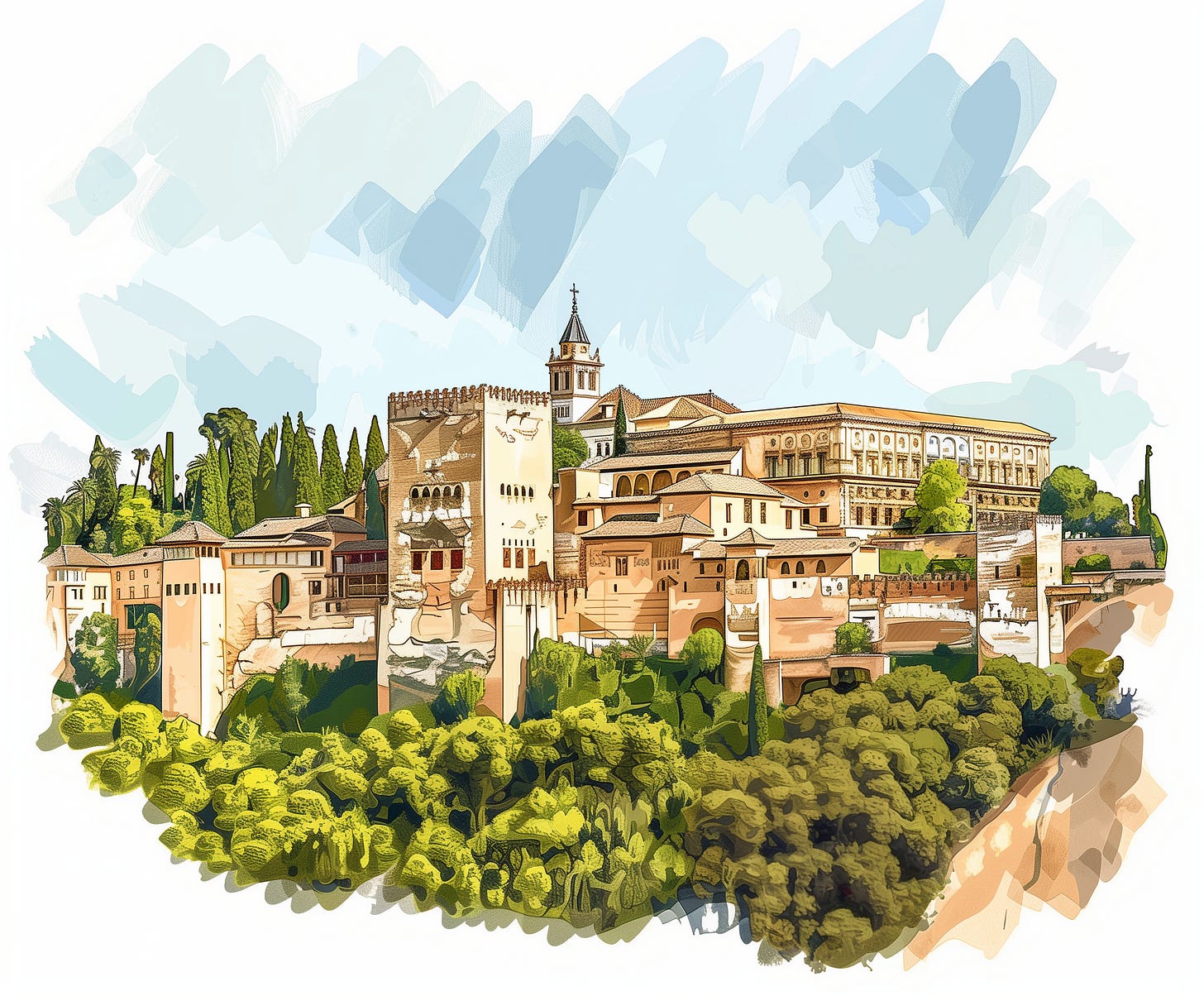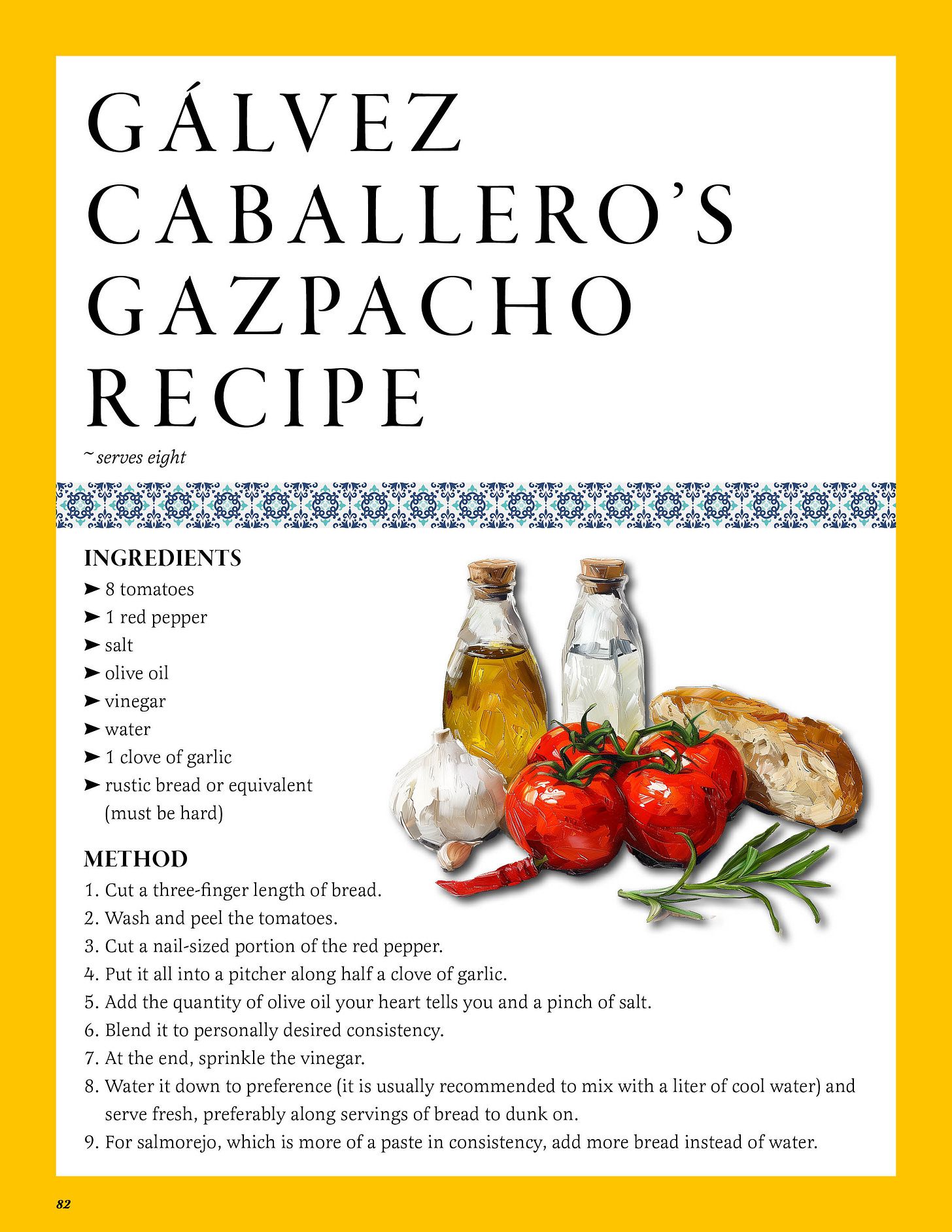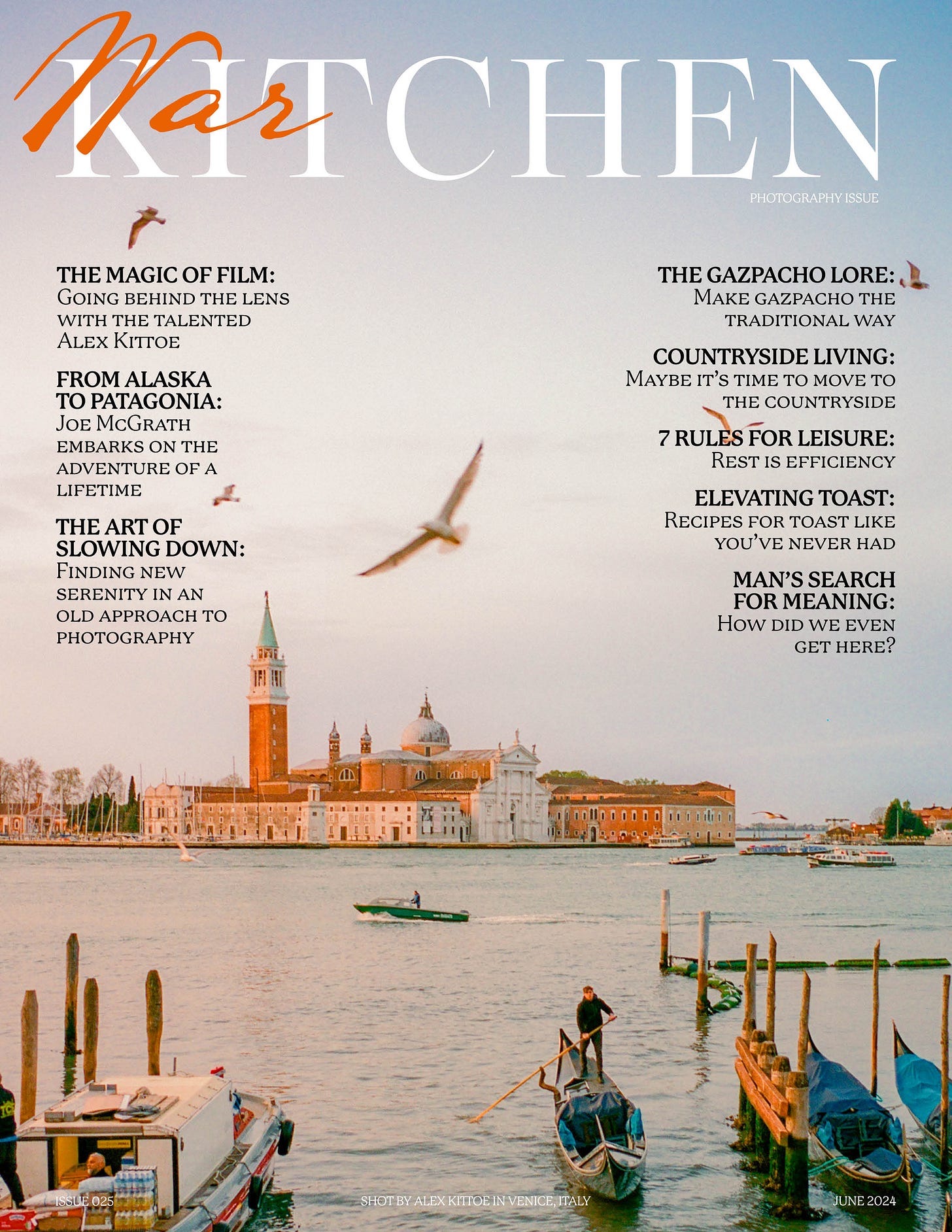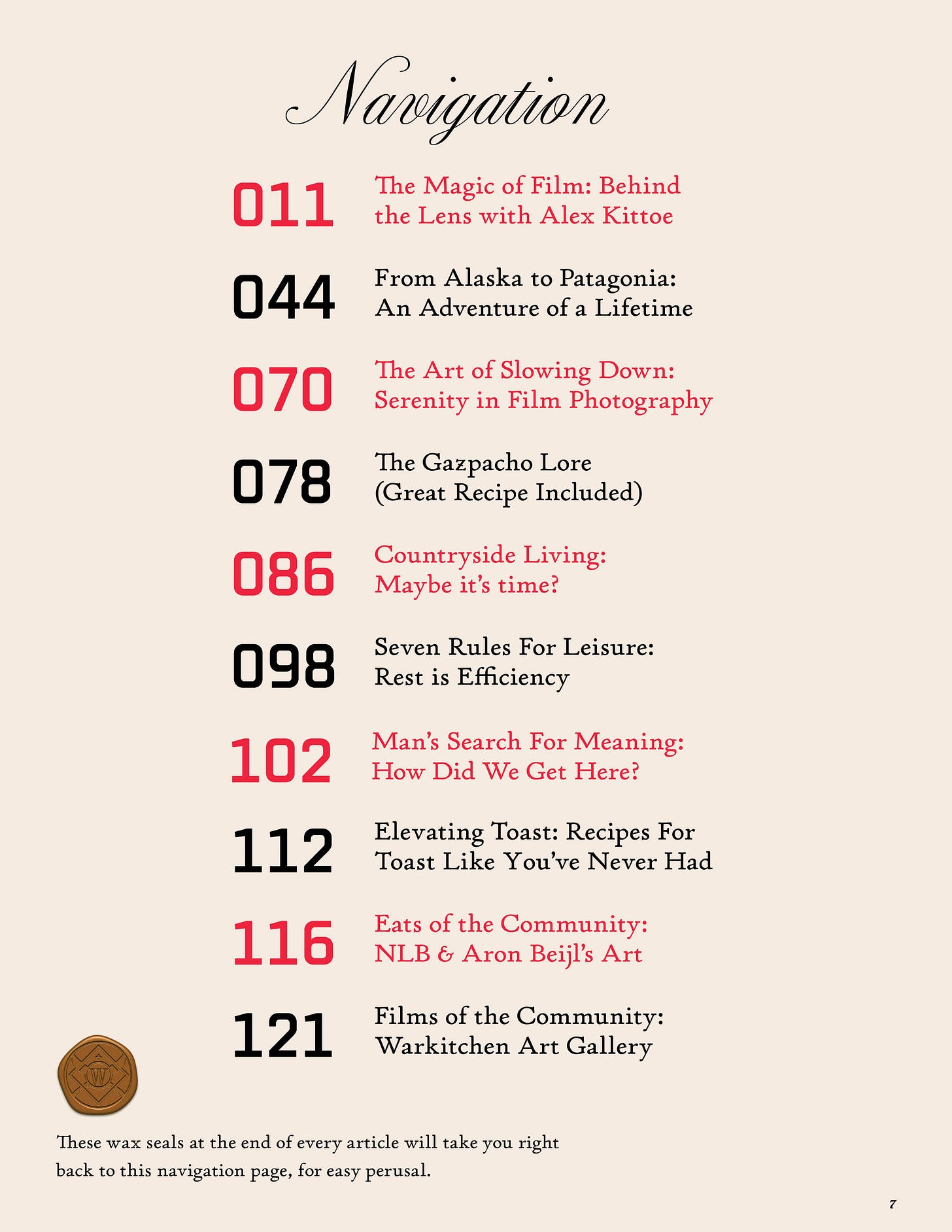In Summer, Drink Gazpacho
Easy Recipe Included
Lycopersicum esculentum. Allium sativum. Capsicum annuum. Olea europaea. Triticum aestivum. Cucumis sativum*. All of these species have come together to bring you a drink, nay, a potion, nay, an elixir!
As summer approaches, I bring to you, readers of WARKITCHEN a recipe for one of the most refreshing cold drinks in the world—a cool gazpacho. If you’re not too familiar with Spanish gastronomy, you might find yourself confusing gazpacho with its brother, the salmorejo. While both of them are known for their reddish-orange color, originate from the Andalusian province of Córdoba in southern Spain and existed long before tomatoes and cucumbers came to Europe, they’re not the same.Salmorejo dates back to the Middle Ages, long before the Al-Andalus period, when the word salmorejo was actually the general term for soup. It was a dish of pan majado—crushed and blended wet bread— into which various ingredients could be added. Gazpacho, however, derives from the Latin word caccabaceus (meaning cauldron) and originally involved bread soaked in a boiling cauldron. Post-Middle Ages, it evolved to refer to any cold or hot soup that contained hard bread, water, vinegar, salt, oil, and various other ingredients. They weren’t exquisitely made for the court; gazpacho and salmorejo have been feeding southern Spanish farmers for centuries. One was primarily consumed for energy, while the other enjoyed leisurely after a hard day of work. It even spawned the saying “salmorejo, la cama cerca y el agua lejos”, as it was known to make you thirsty and want to rest.
In various parts of Spain, there is actually another dish that’s also called salmorejo, but it is a misnomer. This dish comes from salmis, which is ragu of small game meat that originates from ancient France. I encountered when I tasted the toledan gazpacho, which was anything but the gazpacho I had been accustomed to, especially due to the usage of meat.
Some people say Seville invented gazpacho because it was the only port open to trade with Las Américas during the Columbian exchange in all of Spain. However, I don’t believe so. It wouldn’t make a lot of sense for these two to be born from different contexts, as the earliest reference to this modern gazpacho is from the 19th century when tomato crops were commonplace in the fertile lands of Andalusia.
There are also other variations of gazpacho. There is one known as mazamorra, which is more of a paste and different in color, but still bread-based. There is white salmorejo, which uses almonds, and now that it has reached the interest of modern tourism (it was also mentioned as far back as in William George Clark’s travelogue Gazpacho; or, Summer Months in Spain), there is a whole shop called Salmoreteca in the city center of Córdoba, which offers modern takes on Salmorejo, now with avocado or other ingredients! As with most regional recipes, each household makes it differently. Some people add slices of cucumber to their gazpacho, while others refrain from adding hard-boiled eggs to their salmorejo. In the countryside, specific towns will call it gazpacho or salmorejo but use different ingredients, making them appear white or even green. The famous version is the “gazpacho andaluz,” but there are places in Portugal where they don’t blend it and other parts of Spain, like ajoblanco where they make it with almonds, that have their regional variations too.
When you think about it, gazpacho is a conjunction of all ages that have passed through Spain: wheat from ancient times, olive oil of the Romans, cucumbers from Islamic trade, tomatoes of the Aztecs, peppers of the Mexicans, and the modern blender to make it easier (a pestle and mortar was used traditionally). They all come together to bring a single great recipe.
Tomatoes gives gazpacho its characteristic color and taste. Vinegar and oil give it the consistency, red pepper and garlic add more color and flavor, while the bread and water provide the base where everything mixes.
Like many modern dishes, gazpacho started as humble dish and now finds itself within the walls of many Michelin-starred restaurants. And this is for good reason. Not only does it make for a pretty dish, but from a health perspective, gazpacho offers incredible nourishment. It’s abundant in vitamins C, A, E, arbohydrates, minerals, fiber, and antioxidants. Apart from being satiating, it also has enough salts to be considered an isotonic drink like gatorade. Before I go, I’ll leave you with my very own recipe so you can try making your own gazpacho at home.
Gálvez Caballero’s Gazpacho Recipe
~ serves eight
Ingredients
8 tomatoes
1 red pepper
salt
olive oil
vinegar
water
1 clove of garlic
rustic bread or equivalent
(must be hard)
Method
Cut a three-finger length of bread.
Wash and peel the tomatoes.
Cut a nail-sized portion of the red pepper.
Put it all into a pitcher along half a clove of garlic.
Add the quantity of olive oil your heart tells you and a pinch of salt.
Blend it to personally desired consistency.
At the end, sprinkle the vinegar.
Water it down to preference (it is usually recommended to mix with a liter of cool water) and serve fresh, preferably along servings of bread to dunk on.
For salmorejo, which is more of a paste in consistency, add more bread instead of water.
Here’s a great graphic you can save in your phone for easy reference:
Lastly, if you visit Spain, do not drink or eat the store-bought versions of gazpacho or salmorejo. They typically use too much vinegar, and the industrial processing makes them far less healthy than homemade versions. I mean, you could try the watered down version, but after tasting real gazpacho, why would you not make it yourself?
This article was written by Gálvez Caballero and originally published in Issue 25 of the WARKITCHEN Magazine. You can reach him on Instagram @galvezcaballerowork and let him know how your gazpacho turned out!
P.S. Adding us (rocky@warkitchen.net) to your contacts, or moving us to primary will make sure you continue receiving these emails. Access the rest of our magazines and all of our links here. Godspeed 🥂
(Clicking on navigation page below takes you right to the PDF of Issue 25. Enjoy!)








